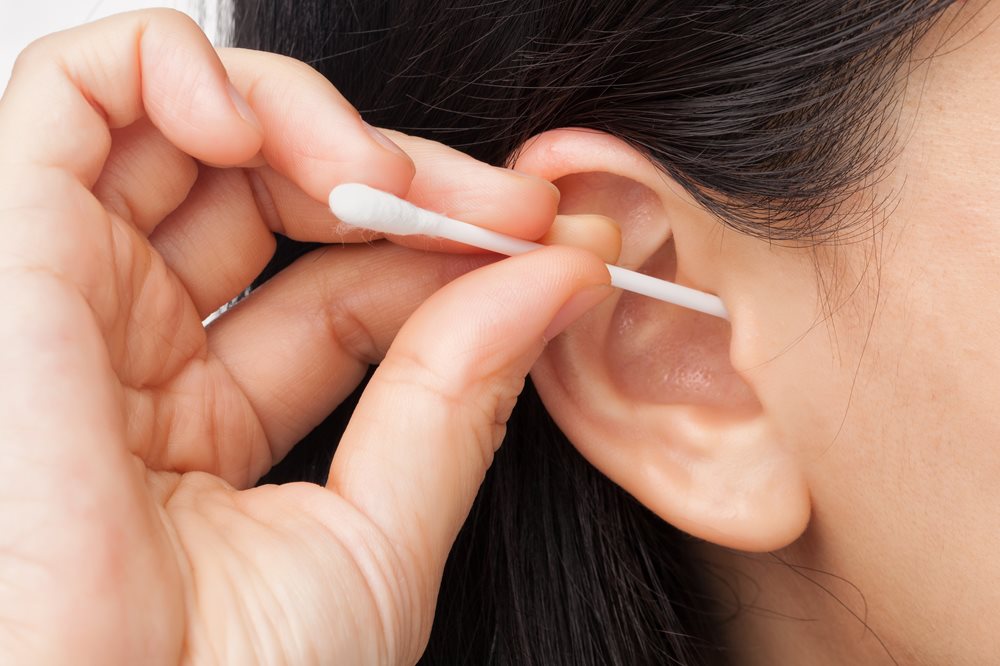The Dos and Don’ts of Earwax Cleaning
The ear is naturally designed to remove its own earwax and clean itself. All that’s needed is regular showering and cleaning the outer ear with a cloth.
But for many people, cleaning their ears with cotton swabs has become a routine part of their hygiene regimen. However, harmless and effective that may seem, don’t do it. Removing earwax with a Q-tip can actually lead to a variety of medical issues.
 “Earwax (cerumen) plays a vital role in our body by being nature’s defense mechanisms, preventing infections from entering the body,” said Dr. Lindsay Bondurant, director of the Pennsylvania Ear Institute. “It keeps harmful things such as bugs, sand and dirt from getting into our ears and to the eardrum. It also helps to lubricate the skin of the ear canal, keeping it from getting dry and itchy.
“Earwax (cerumen) plays a vital role in our body by being nature’s defense mechanisms, preventing infections from entering the body,” said Dr. Lindsay Bondurant, director of the Pennsylvania Ear Institute. “It keeps harmful things such as bugs, sand and dirt from getting into our ears and to the eardrum. It also helps to lubricate the skin of the ear canal, keeping it from getting dry and itchy.
The Risks of Cotton Swab Usage
Ear Canal Injuries: The use of cotton swabs can lead to accidental injuries to the ear canal or eardrum. Inserting the swab too far can cause scratches, abrasions, or even puncture the eardrum, which can result in pain, bleeding, hearing loss, and potential infection. Even partial insertion of the swab into the ear canal can lead to injury if there is unexpected motion of the hand or arm that pushes the swab too close to the eardrum.
Pushing Earwax Further: Rather than effectively removing earwax, Q-tips often push it deeper into the ear canal. Over time, this can lead to impaction, a condition where excessive earwax accumulates and causes discomfort, muffled hearing, dizziness, and tinnitus (ringing in the ears).
Infection Risk: Cotton swabs can introduce bacteria or fungi into the ear canal, increasing the likelihood of developing infections. The moist and warm environment of the ear canal, combined with the introduction of foreign microorganisms, can lead to painful ear infections, such as otitis externa.
Disruption of Earwax Balance: The consistent removal of earwax with cotton swabs disrupts the natural self-cleaning mechanism of the ear. This can result in dryness, itching, and irritation of the ear canal, leaving it vulnerable to infection and inflammation.
Safer Alternatives for Ear Care
The golden rule for ear care is to refrain from inserting any objects into the ear canal. This includes cotton swabs, bobby pins, keys, or any other tools. Let the earwax naturally migrate out of the ear and only clean the external parts of the ear with a cloth.
 If the problem isn’t serious, but there is still too much earwax buildup, a few drops of baby oil, hydrogen peroxide, mineral oil, or glycerin in the ear will help to soften the wax. Most over-the-counter wax removal kits are effective at softening wax so it can work its way out of the ear naturally.
If the problem isn’t serious, but there is still too much earwax buildup, a few drops of baby oil, hydrogen peroxide, mineral oil, or glycerin in the ear will help to soften the wax. Most over-the-counter wax removal kits are effective at softening wax so it can work its way out of the ear naturally.
According to Dr. Bondurant, while the temptation to use cotton swabs for ear cleaning may be strong, it is crucial to recognize the potential medical harms associated with this practice.
“By understanding the benefits of earwax and adopting safer alternatives for keeping your ears clean and healthy, you can protect your ear health and prevent unnecessary complications,” she said.
If you experience symptoms of excessive earwax, hearing loss, or discomfort, schedule an appointment with one of the Pennsylvania Ear Institute (PEI) audiologists today by calling 215.780.3180.